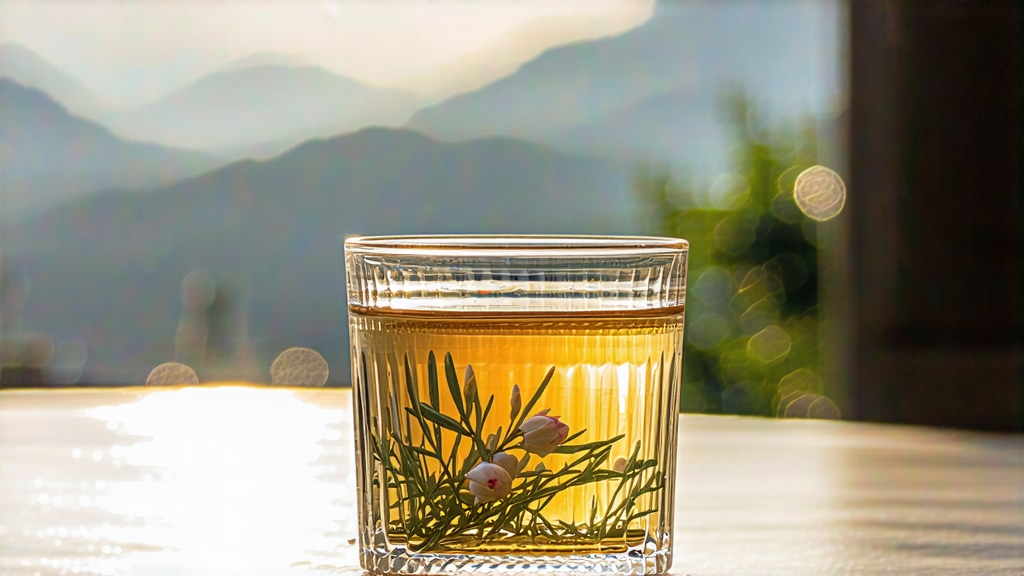
Among the six great families of Chinese tea, white tea is the least theatrical yet the most haunting: it is simply picked and left to whisper with air and time. Within this minimalist lineage, Bai Hao Yin Zhen—translated abroad as White Hair Silver Needle—stands as the purest expression of the leaf’s original soul. Composed solely of unopened leaf buds plucked for only a few spring mornings, the tea looks like a handful of ivory needles dusted with downy silver, as if moonlight itself had been spun into filament. To international drinkers accustomed to rolled oolongs or roasted pu-erh, Silver Needle can feel almost too subtle; yet once its quiet language is learned, it becomes the benchmark against which all delicacy is measured.
Historical roots
The written record of “white tea” first surfaces in the Song dynasty (960-1279), when Huizong Emperor praised a cake of “white buds” so rare that it never left the palace. The loose, needle-shaped bud tea we recognise today, however, crystallised during the late eighteenth century in northern Fujian. Farmers in the rugged counties of Fuding and Zhenghe discovered that the local Da Bai Hao (“Big White Hair”) cultivar produced buds unusually plump with amino acids and covered in a visible down that reflected light like frost. Transport mules carried these buds down to coastal ports such as Guangzhou, where European traders, startled by their pallor, nicknamed them “silver needles.” By the 1890s Silver Needle had become one of China’s first teas to fetch more than its weight in silver on the London market, and it quietly entered the cellars of Russian czars and British manor houses alike.
Micro-terroirs and grades
Although the Chinese government now protects the name “Bai Hao Yin Zhen” under geographical indication, two micro-terroirs still dominate. Fuding, sitting on red granite soils washed by East-China-Sea fog, yields needles that are broader, silver-white, and famously perfumed with fennel-like sweetness. Zhenghe, higher in altitude and shrouded in acidic yellow soils, produces slimmer, grey-green needles with a deeper, hay-like bass note. Purists treat them as yin and yang expressions of the same tea, and vertical tastings often begin by comparing the two. Within each region, buds are further sorted into three unofficial grades—Imperial (uniform 2.5–3 cm, unbroken tips), Select (slightly varied length, 5 % breakage), and Fine (shorter, 10 % breakage)—but these distinctions rarely appear on export labels, so knowing the county of origin is the surest compass.
Crafting by weather, not by hand
The processing protocol for Silver Needle is disarmingly short on paper: pick, wither, dry. Yet each step is a negotiation with humidity, temperature, and the bud’s own respiration. Picking begins when the dawn dew still clings, because a turgid bud retains its down; fingernails are preferred over shears to avoid the microscopic bruise that would later oxidise into a red rim. The buds are then spread one layer deep on bamboo trays stacked like screens in open-walled barns. For the next 36–48 hours they exist in a twilight state: enzymes slowly convert proteins into sweet amino acids while moisture exits at a rate that must never exceed 3 % per hour. Master tea makers call this “the breath of the bud,” and they adjust the breath by sliding trays into shafts of sunlight or under the shade of reed mats every twenty minutes. Finally, the semi-dried buds are transferred to low charcoal ovens fired by longan wood where they bake at 40–45 °C for less than an hour; the goal is to freeze the fragrance rather than cook it. No rolling, no fixing, no fermentation—just a choreography of air and gentle heat—yet the margin for error is thinner than any other tea.
Chemistry in the cup
What survives this minimalist journey is a chemical profile unlike that of green or black teas. Because the bud is never heated above 50 °C, its catechins remain largely unoxidised, while a higher ratio of theanine to caffeine creates a naturally sweet, umami-laden liquor that rarely turns bitter. The visible down is not merely decorative; each trichome is a microscopic sac of volatile terpenes dominated by hotrienol and